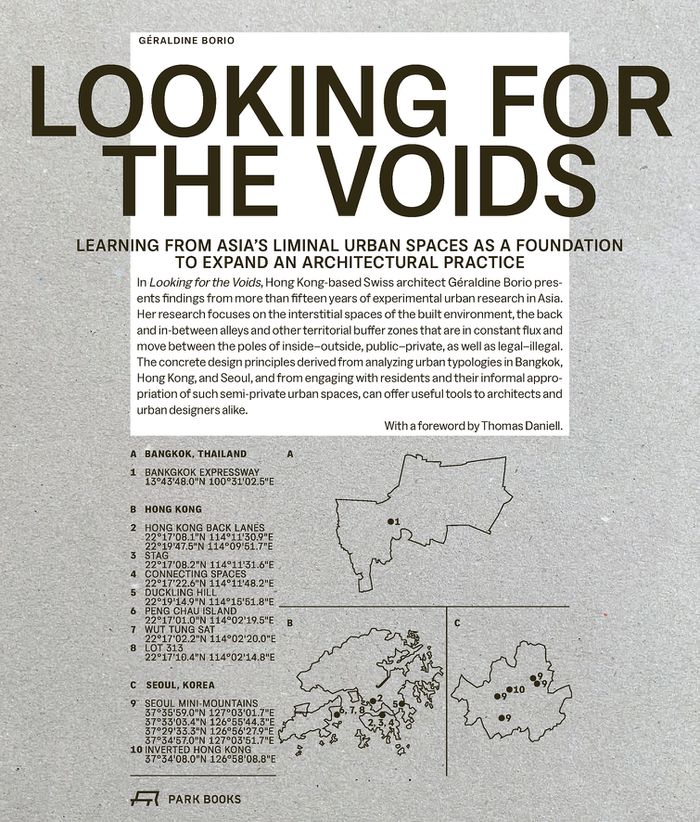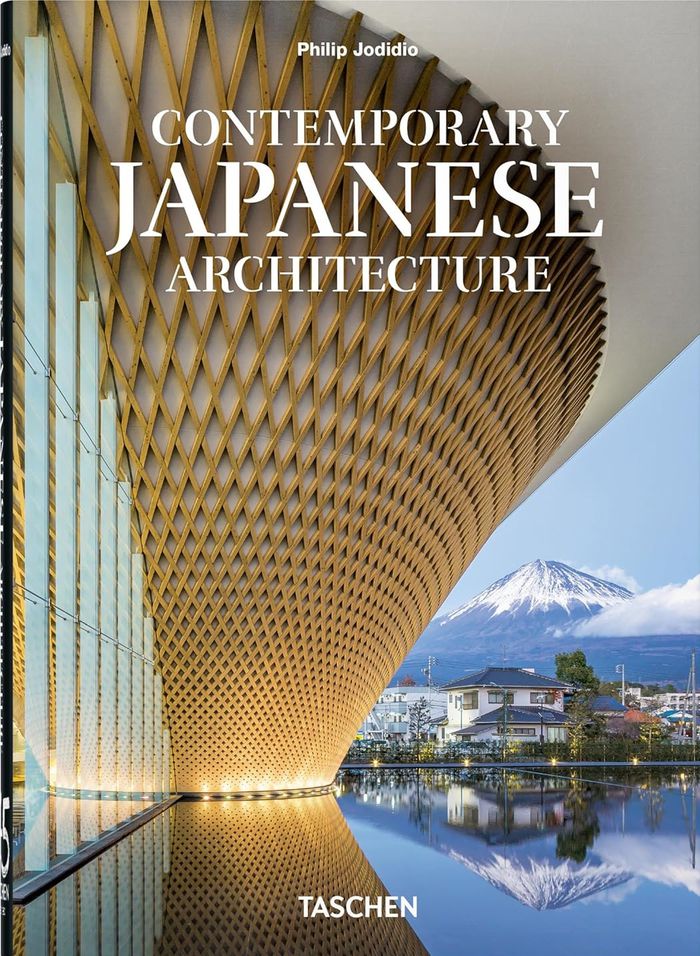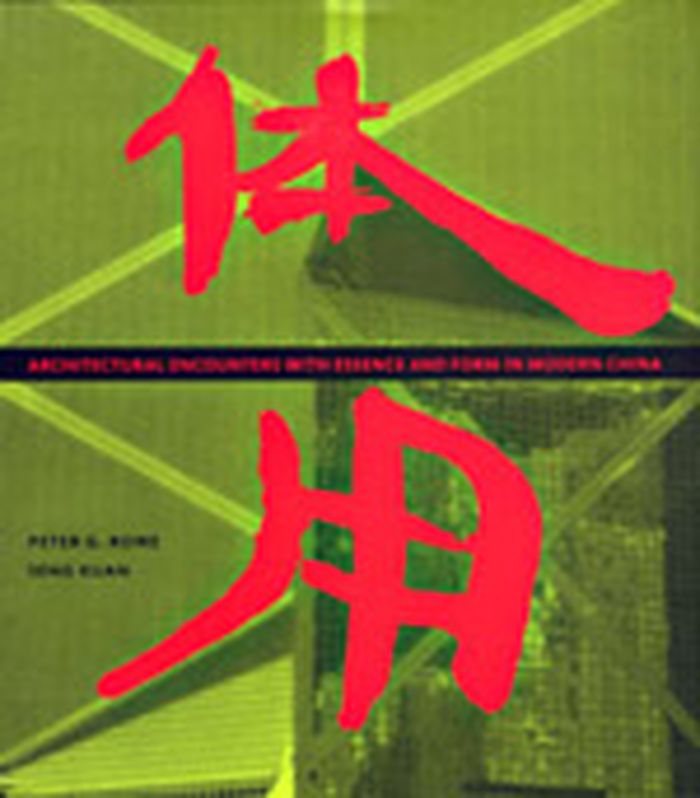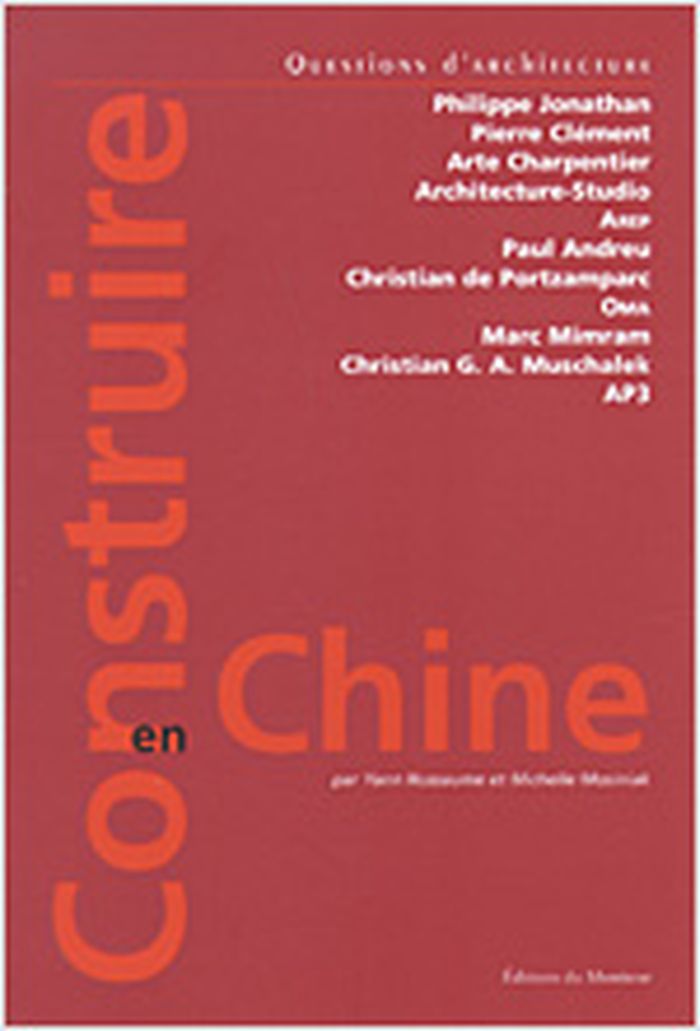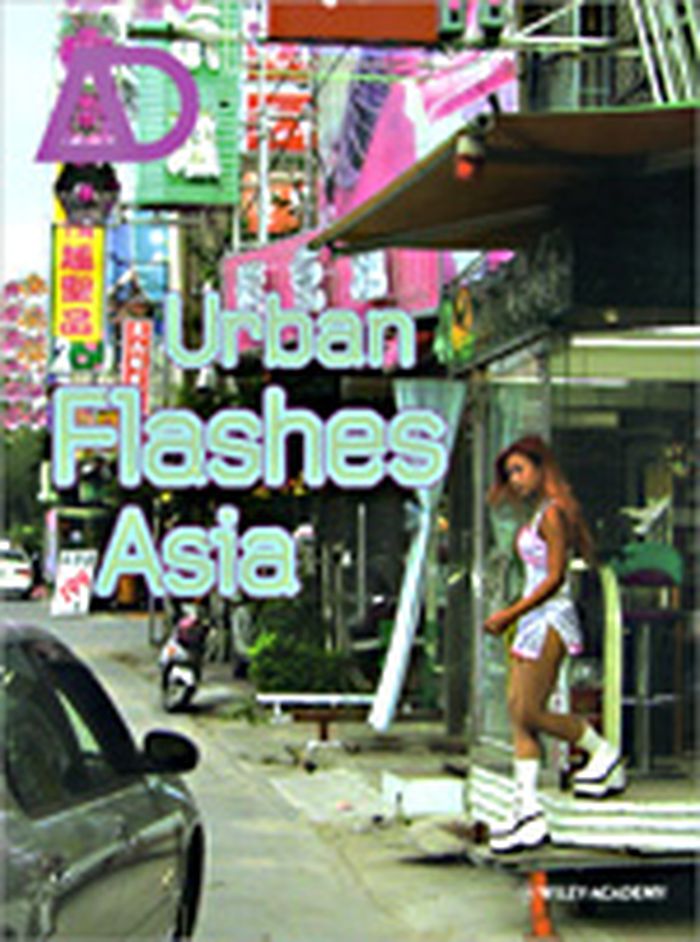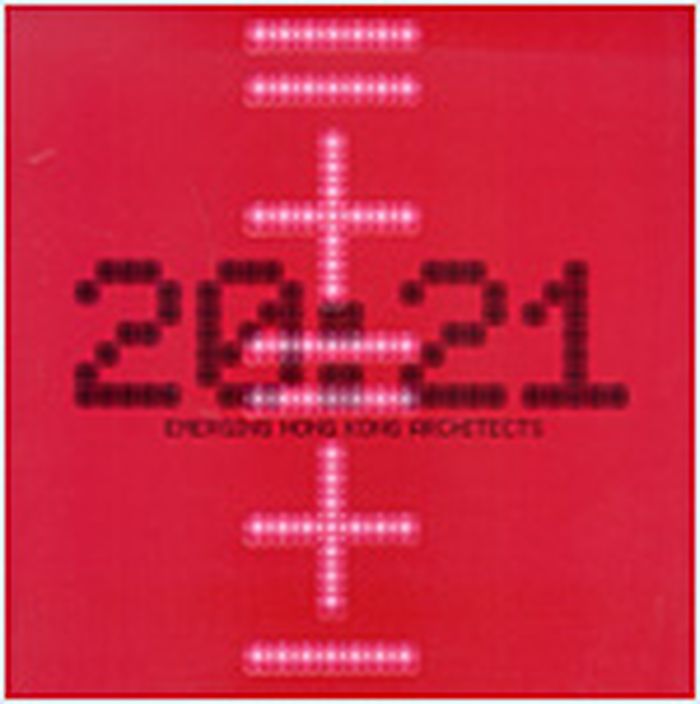$60.00
(available in store)
Summary:
In ''Looking for the voids'', Hong Kong-based Swiss architect Géraldine Borio presents findings from more than fifteen years of experimental urban research in Asia. Her research focuses on the interstitial spaces of the built environment, the back and in-between alleys and other territorial buffer zones that are in constant flux and move between the poles of(...)
Looking for the voids: Learning from Asia's liminial urban spaces as a foundation to expand
Actions:
Price:
$60.00
(available in store)
Summary:
In ''Looking for the voids'', Hong Kong-based Swiss architect Géraldine Borio presents findings from more than fifteen years of experimental urban research in Asia. Her research focuses on the interstitial spaces of the built environment, the back and in-between alleys and other territorial buffer zones that are in constant flux and move between the poles of inside–outside, public–private, as well as legal–illegal.
$61.95
(available in store)
Summary:
Photographs by Homma Takashi. Roppongi Hills is one of Japan's largest integrated property developments, located in the Roppongi district of Tokyo. Constructed by building tycoon Minoru Mori, the mega-complex incorporates office space, apartments, shops, restaurants, cafés, movie theaters, a museum, a hotel, a major TV studio, an outdoor amphitheater, and a few parks. The(...)
March 2006, Tokyo
Six strata : Roppongi Hills defined
Actions:
Price:
$61.95
(available in store)
Summary:
Photographs by Homma Takashi. Roppongi Hills is one of Japan's largest integrated property developments, located in the Roppongi district of Tokyo. Constructed by building tycoon Minoru Mori, the mega-complex incorporates office space, apartments, shops, restaurants, cafés, movie theaters, a museum, a hotel, a major TV studio, an outdoor amphitheater, and a few parks. The centerpiece is the 54-story eponymous Mori Tower. Mori's stated vision was to build an integrated development where high-rise inner-urban communities allow people to live, work, play, and shop in close proximity to eliminate commuting time. Seventeen years in the making, the complex opened to the public on april 23, 2003.
$42.00
(available in store)
Summary:
Since Osaka World Expo ’70 highlighted contemporary forms, Japan has been a key player in global architecture. Tadao Ando's geometry put Japanese building on the map, bridging East and West. After his concrete buildings, figures like Kengo Kuma, Shigeru Ban, and Kazuyo Sejima pioneered a more sustainable approach. Younger generations have taken new directions, in harmony(...)
Contemporary Japanese architecture
Actions:
Price:
$42.00
(available in store)
Summary:
Since Osaka World Expo ’70 highlighted contemporary forms, Japan has been a key player in global architecture. Tadao Ando's geometry put Japanese building on the map, bridging East and West. After his concrete buildings, figures like Kengo Kuma, Shigeru Ban, and Kazuyo Sejima pioneered a more sustainable approach. Younger generations have taken new directions, in harmony with nature, traditional building, and an endless search for forms. Presenting the latest in Japanese building, this book links this unique creativity to Japan's high population density, modern economy, long history, and continual disasters in the form of earthquakes. Accepting ambiguity, constant change, and catastrophe is a key to understanding how Japanese architecture differs from that of Europe or America.
$55.95
(available in store)
Summary:
Built around snatches of discussion overheard in a Beijing design studio, this book explores attitudes toward architecture in China since the opening of the Treaty Ports in the 1840s. Central to the discussion are the concepts of ti and yong, or “essence” and “form,” Chinese characters that are used to define the proper arrangement of what should be considered modern and(...)
April 2002, Cambridge, Mass.
Architectural encounters with essence and form in modern China
Actions:
Price:
$55.95
(available in store)
Summary:
Built around snatches of discussion overheard in a Beijing design studio, this book explores attitudes toward architecture in China since the opening of the Treaty Ports in the 1840s. Central to the discussion are the concepts of ti and yong, or “essence” and “form,” Chinese characters that are used to define the proper arrangement of what should be considered modern and essentially Chinese. Ti and yong have gone through various transformations--for example, from “Chinese learning for essential principles and Western learning for practical application” to “socialist essence and cultural form” and an almost complete reversal to “modern essence and Chinese form.” The book opens with a discussion of cultural developments in China in response to the forced opening to the West in the mid-nineteenth century, efforts to reform the Qing dynasty, and the Nationalist and Communist regimes. It then considers the return of overseas-educated Chinese architects and foreign influences on Chinese architecture, four architectural orientations toward tradition and modernity in the 1920s and 1930s, and the controversy over the use of “big roofs” and other sinicizing aspects of Chinese architecture in the 1950s. The book then moves to the hard economic conditions of the Great Leap Forward and the Cultural Revolution, when architecture was almost abandoned, and the beginning of reform and opening up to the outside world in the late 1970s and 1980s. Finally, it looks at the present socialist market economy and Chinese architecture during the still incomplete process of modernization. It closes with a prognosis for the future.
Construire en Chine
$37.95
(available in store)
Summary:
Transposer le savoir urbanistique et architectural occidental en Chine. À l’heure où la Chine connaît un développement phénoménal, qui s’accompagne de gigantesques chantiers de construction de logements, de bureaux et d’équipements, et où des villes et des quartiers cherchent à élaborer leur plan d’urbanisme pour leur développement futur, les architectes français et(...)
September 2005, Paris
Construire en Chine
Actions:
Price:
$37.95
(available in store)
Summary:
Transposer le savoir urbanistique et architectural occidental en Chine. À l’heure où la Chine connaît un développement phénoménal, qui s’accompagne de gigantesques chantiers de construction de logements, de bureaux et d’équipements, et où des villes et des quartiers cherchent à élaborer leur plan d’urbanisme pour leur développement futur, les architectes français et européens jouent dans ce pays un rôle non négligeable de conseil et d’expertise, apportant leur réflexion, leur culture architecturale et urbaine et leur expérience. En retour, leur façon de penser l’architecture et peut-être de construire se trouve profondément marquée par l’expérience chinoise. Ce livre, à travers onze interviews, veut témoigner de ces échanges, de ces allers et retours et de tous les questionnements qui les accompagnent.
$54.99
(available to order)
Summary:
Urban Flashes Asia is a bold conceptual and architectural response to the contemporary city. Supplanting recent Western accounts of urban developments, centred largely on European research, it introduces an emergent network of globally dispersed architects, theorists and urbanists.
October 2003, Chichester
Urban flashes Asia : new architecture and urbanism in Asia
Actions:
Price:
$54.99
(available to order)
Summary:
Urban Flashes Asia is a bold conceptual and architectural response to the contemporary city. Supplanting recent Western accounts of urban developments, centred largely on European research, it introduces an emergent network of globally dispersed architects, theorists and urbanists.
books
$61.95
(available in store)
Summary:
Introducing the urban and architectural designs Kobayashi has undertaken since the previous edition of "Interventions" (1996). Each project is described in detail by Kobayashi, revealing his thoughts and development over the last five years. In this, he is looking for new models to rejuvenate city plans and the buildings we live in.
January 2003, Tokyo
Interventions II : Masami Kobayashi
Actions:
Price:
$61.95
(available in store)
Summary:
Introducing the urban and architectural designs Kobayashi has undertaken since the previous edition of "Interventions" (1996). Each project is described in detail by Kobayashi, revealing his thoughts and development over the last five years. In this, he is looking for new models to rejuvenate city plans and the buildings we live in.
books
January 2003, Tokyo
$57.95
(available in store)
Summary:
"20:21 - Emerging Hong Kong Architects" presents a spectrum of 20 architectural works from 20 Hong Kong architects selected from an open competition "Emerging Hong Kong Architects" organized by Hong Kong Institute of Architects in April 2003. Architects participating in the competition were asked to respond to 'architecture' amidst this complex 21st century where(...)
April 2005, Hong Kong
20:21 - Emerging Hong Kong architects
Actions:
Price:
$57.95
(available in store)
Summary:
"20:21 - Emerging Hong Kong Architects" presents a spectrum of 20 architectural works from 20 Hong Kong architects selected from an open competition "Emerging Hong Kong Architects" organized by Hong Kong Institute of Architects in April 2003. Architects participating in the competition were asked to respond to 'architecture' amidst this complex 21st century where multi-disciplinary frontiers are more obscure than ever, space topographies are transforming, and active hybridization is in the making. In the book, the architects write about their aspirations in their profession, present their views on architecture, and explore future scenarios; each of different modulations and sensibilities expressed in their own architectural language, and some articulated through the exploration process with various art forms. In a joint effort to navigate through the vista of architecture, this is the first publication from Hong Kong Institute of Architects bringing together a multitude of the established, the upcoming and the heretofore unknown young architects in Hong Kong. Publication in English and Chinese.
books
$63.95
(available in store)
Summary:
Posing philosophical questions at the outset, the publication “Being Chinese in Architecture” features seven different projects by Rocco Design in Greater China. The work ranges from single house to residential complex, hotel, cultural building to urban planning - Distorted Courtyard House by the Great Wall, Bamboo Pavilion at Berlin/Hong Kong, Giu-gen-tong Villa in(...)
January 2004, Hong Kong
Being Chinese in architecture : recent works in China by Rocco Design
Actions:
Price:
$63.95
(available in store)
Summary:
Posing philosophical questions at the outset, the publication “Being Chinese in Architecture” features seven different projects by Rocco Design in Greater China. The work ranges from single house to residential complex, hotel, cultural building to urban planning - Distorted Courtyard House by the Great Wall, Bamboo Pavilion at Berlin/Hong Kong, Giu-gen-tong Villa in Shanghai, Boao Canal Village, Hotel project in Chengdu, Beijing Central Business District, and the new winning project Museum of Guangdong.
books
January 2004, Hong Kong
books
$57.95
(available in store)
Summary:
En Asie, le grand hôtel est directement lié au voyageur étranger. Il correspond à un temps non seulement de modernisation urbaine mais aussi d'ouverture et de relation avec les Occidentaux. C'est donc un lieu de rapport de forces économiques, d'importation de techniques modernes et de comportements nouveaux, un lieu enfin de confrontation culturelle. Objet urbain importé(...)
January 2004, Paris
Les grands hôtels en Asie : modernité, dynamiques urbaines et sociabilité
Actions:
Price:
$57.95
(available in store)
Summary:
En Asie, le grand hôtel est directement lié au voyageur étranger. Il correspond à un temps non seulement de modernisation urbaine mais aussi d'ouverture et de relation avec les Occidentaux. C'est donc un lieu de rapport de forces économiques, d'importation de techniques modernes et de comportements nouveaux, un lieu enfin de confrontation culturelle. Objet urbain importé de l'Occident, le grand hôtel s'impose néanmoins comme marqueur des sociétés urbaines asiatiques. Il invite ainsi à reconsidérer les oppositions classiques entre la tradition et la modernité, l'identité asiatique et l'occidentalisation. Différentes générations de grands hôtels coexistent aujourd'hui dans les métropoles développées d'Asie que sont Tôkyô, Séoul, Hong Kong, Shanghai ou Pékin. Nombreux sont leurs atouts pour attirer les clients locaux et étrangers : ils s'appuient sur l'évocation de temps magnifiés et révolus, ou au contraire sur la modernité et le renouveau qu'ils incarnent ; ou bien ils jouent de leur double identité occidentale et asiatique ; enfin, ils offrent des services spécifiques (bar de nuit, salle d'exposition, centre de conférence...) Deux démarches sont ici suivies : une comparaison de l'usage asiatique du grand hôtel - et de ses temporalités - avec celui en Europe et en Amérique du Nord ; puis, l'analyse des modèles urbains venus d'Occident non pas sous l'angle de la seule importation mais aussi sous celui d'une histoire proprement asiatique de l'occidentalisation. A partir d'un objet singulier, cet ouvrage propose une interrogation sur la ville dans ses dimensions spatiale, sociale et de représentation. Il porte en particulier sur les sociabilités urbaines en Asie aujourd'hui, et il est issu d'une réflexion commune entre architectes, historiens et géographes, tous spécialistes de l'Asie orientale.
books
January 2004, Paris
